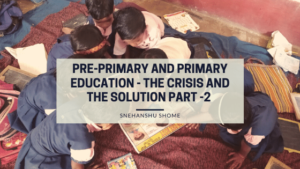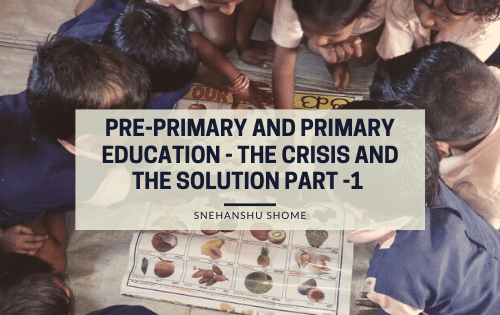We live in a fast-paced world with a very short attention span. Thus, we always strive for a quick solution to everything. And we overlook so many other factors of a solution like accessibility, feasibility or sustainability. I believe a solution or any intervention to an issue would bring about a positive change if it is accessible to all and not to a few. Let me present you with a case to understand it.
Arpita* is pursuing her graduation from a college in rural Odisha. She has to manage her and her younger sister’s education-related expenses. She has a very active interest in teaching but does not have the required know-how formal academic degree to pursue her interest.
Utkarsh* is studying in the 4th grade from a public school. He lives in the same village as Arpita. Their locality gets cut off from the other half of the village during rainy seasons. The public school is inaccessible to Utkarsh during this period as it is present on the other side of the village. Utkarsh is missing out on learning and his parents’ are a worried lot!
There are many youths like Arpita who are aspiring to do something for themselves. They have the potential, the energy and the passion to change their destiny. But their aspirations are never fulfilled due to limited opportunities and skills. Similarly, many parent like Utkarsh’s are unable to provide quality education for their children due to geographical and socio-economic constraints. So, what next for both Arpita and Utkarsh?
Let’s understand our problem again. In the first case, we saw that youths like Arpita want to teach children but don’t have the required skills. In the second case, young children like Utkarsh are missing out on good learning opportunities in their own communities. Now think about the kind of solution I discussed initially. A solution has to be accessible, sustainable and affordable. What kind of solution are you proposing keeping all the factors in mind?
If we think of a solution like opening a coaching center and inviting good teachers from outside, would it be sustainable? Or if Utkarsh would be provided with a smartphone and a one-year subscription to an ed-tech platform to avail online education, would it really help Utkarsh? What would Utkarsh do after one year or how would he recharge the sim card, or what would he do if the smartphone breaks down? This definitely is not a sustainable solution for those who cannot afford it. But maybe for those who can afford a subscription after one year.
Now, what if youth who are aspiring to teach children are skilled to do so? Children can avail quality education in their own communities and youths can earn pocket expenses which can help them support their own education. This is sustainable, feasible and accessible. ThinkZone has been doing this since 2015. ThinkZone is equipping youths with pedagogical skills and technical know-how, so they can teach children in their own communities. Currently, ThinkZone is supporting, mentoring and skilling more than one thousand youths. These youths are teaching more than nine thousand children and making quality education accessible to everyone. Children are making substantial learning gains in language & arithmetic and simultaneously youth are learning new skills. This solution on which ThinkZone works is affordable, feasible and sustainable.
What different ThinkZone is doing is implementing a local solution to local problems. It aims to empower one member of a community to bring about a positive change. Because we live and interact in a community. And education is not independent of the community’s participation. The role of community in education is huge. It is mentioned in both National Curriculum Framework 2005 and in National Education Policy 2020. Consider the case of Uttkarsh and Arpita – both of them are from the same community. They have interacted before and know each other well. Now Arpita knows how Uttkarsh learns better than someone from another village. If Arpita would be a teacher for Uttkarsh, the probability is high that Uttkarsh would learn better. And it is a sustainable solution. The solution would empower both Arpita and Uttkarsh to earn and learn respectively.
*Names have been changed to protect the identity of the person.



Hello there, You have done a fantastic job. I will certainly digg it and personally recommend to my friends. I’m confident they’ll be benefited from this website.